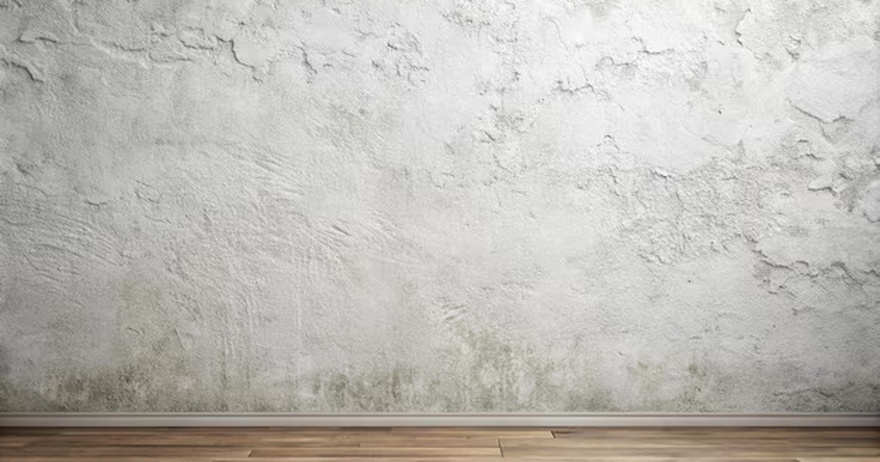If you’ve noticed strange yellow drips running down your bathroom walls, it’s definitely concerning. Bathrooms are supposed to be clean and refreshing spaces, so seeing yellow stains can be a real head-scratcher. If you’re dealing with this issue, you’re probably wondering, “What is causing this?” Don’t worry—you’re not alone. In this article, we’ll take a closer look at what could be behind these yellow drips and how you can fix them.

What Exactly Is Mold and Why Is It Dangerous?
Mold is a common bathroom problem, but it’s more than just an unsightly annoyance. Mold is a type of fungus that grows where moisture is present, particularly in damp environments like bathrooms. When mold spores find a wet surface, they latch on and spread quickly. You might think mold is harmless, but certain types can pose serious health risks, including triggering allergies, causing respiratory issues, and even leading to chronic health conditions in some cases. That’s why it’s essential to catch and deal with mold early.
The yellow substance dripping down your bathroom walls could very well be mold, especially if you notice a musty smell or your allergies seem to act up when you enter the bathroom. Mold thrives in warm, humid environments—exactly what your bathroom provides, thanks to constant moisture.
What Causes Mold to Grow in Bathrooms?
In most bathrooms, mold growth is not a question of “if” but “when.” After a hot shower, steam rises and creates condensation on walls, ceilings, and tiles. Without proper ventilation, that moisture has no way to escape, making your bathroom an ideal breeding ground for mold. Mold often hides in unseen areas—behind toilets, under sinks, and even on ceilings.
Sometimes, mold can appear as yellow or even black streaks. It can grow around windows, on shower curtains, and near plumbing fixtures. If you’re noticing yellow drips, there’s a good chance mold has already started settling into your bathroom walls.
Yellow Drips: What Could They Be?
While mold is a likely culprit, it’s not the only potential cause of those yellow drips. Here are a few possibilities:
1. Nicotine Stains
If previous occupants of your home were smokers, nicotine residue might be to blame. Over time, nicotine can seep through paint, especially in high-moisture environments like bathrooms. Even if you’ve repainted, these yellow streaks can reappear as nicotine continues to push its way through the walls.
2. Soap Scum and Hard Water Deposits
Soap scum buildup combined with hard water deposits can leave yellowish residue on your bathroom walls. If you live in an area with hard water, minerals in the water can build up on surfaces over time. When mixed with soap, this can result in yellow drips forming on walls and other bathroom surfaces.
3. Yellow Mold and Mildew
Yes, mold can be yellow. Mold can take on a yellowish hue, especially when mixed with moisture or soap scum. This yellow mold can be just as harmful as black mold, so it’s important to deal with it promptly.
How to Prevent and Get Rid of Mold in Your Bathroom
Prevention is the first line of defense when it comes to mold and other yellowing problems in your bathroom. Here are some practical tips to help you out:
1. Improve Ventilation
Proper ventilation is key to keeping your bathroom mold-free. Open windows, turn on exhaust fans, and leave the bathroom door ajar after showering to allow moisture to escape. Better ventilation means less mold growth.
2. Wipe Down Surfaces
After a shower, take a few moments to wipe down walls and other areas where moisture collects. This simple habit can make a huge difference in preventing mold growth.
3. Use Mold-Resistant Paint
If you’re planning on repainting or renovating your bathroom, consider using mold-resistant paint. This type of paint is specially formulated to keep mold from sticking and growing on the walls.
4. Clean Regularly
Regular cleaning is crucial for keeping mold at bay. Clean the shower, bathtub, and other surfaces frequently using cleaning solutions designed for bathrooms and mold prevention.
Cleaning Mold the Right Way
If you already have mold on your bathroom walls, there’s no need to panic. Here’s how to get rid of it effectively:
1. Use a Bleach Solution
For non-porous surfaces like tiles and sinks, a bleach solution can work wonders. Mix one cup of bleach with a gallon of water and scrub the affected areas. Be sure to ventilate the room well while using bleach.
2. Try Natural Solutions
If bleach sounds too harsh, you can opt for natural alternatives like vinegar or hydrogen peroxide. These natural cleaners are effective against mold without the strong chemicals that come with bleach.
3. Wear Protective Gear
Always wear gloves and a mask when cleaning mold. You don’t want to inhale any mold spores or expose your skin to harsh chemicals.
4. Know When to Call in the Pros
If the mold infestation is severe or goes beyond surface cleaning, it’s time to call a professional mold removal service. Mold can penetrate deep into walls, and without the right tools and expertise, it can be nearly impossible to get rid of completely.
Conclusion: Take Action Before It Spreads
Yellow stains dripping down your bathroom walls are a sign that something isn’t right. Whether it’s mold, soap scum, nicotine, or hard water deposits, it’s important to get to the root of the issue before it gets worse. Regular maintenance, proper ventilation, and prompt action are key to keeping your bathroom free of mold and other unsightly problems. If you notice yellow streaks, take care of them quickly, and don’t hesitate to reach out to professionals if the problem becomes too overwhelming.
By staying proactive, you can ensure that your bathroom remains a clean, healthy space for you and your family.






























